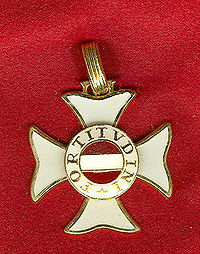Hauptmann Peter Roósz
25 October, 1916: the beginning of the 9th battle of the Isonzo, the winter “push” wanted by “generalissimo” Cadorna to break, once and for all, the Austrian defensive line running from Monte Santo to Trieste. Two Italian Armies, the Second and Third, took part in it, fighting against the Fifth Austrian-Hungarian Army. Italian military strength is enormously superior: 221 Italian battalions against the 91 battalions of the Austrians.
The 1,350 artillery pieces of the Italians blanket bomb the defensive lines of their enemy to its depth, it is a methodic, precise fire, it spares nothing, it breaks the wire frames, the trenches, the quarters in the rear, the warehouses, the headquarters. This hell continues, uninterrupted, until 31 October.
On 1st November, the bombing is intensified, from fire of preparation to fire of “annihilation”. The rate of fire is incredible, its effects are devastating: the defenders lose thousand of men. It it the signal for the infantry to attack. Italian divisions throw themselves on the exhausted Austrian-Hungarian lines of defense, but these resist. For two more days, Italian attacks alternate with Austrian-Hungarian counterattacks. It is a blood-shred fight for the possession of all altitudes, of all doline.
On 3 November starts the crucial day of the offensive. Under the ongoing Italian assaults, the exhausted Austrian-Hungarian divisions begin to yield. By now, there are not enough reserves and only the second defensive lines can be held. The Italian attack now directs to the center of the Karst, hitting the most critical point of Austrian-Hungarian defense, after the deep valley, which is the second line Castagnevizza (Kostanjevica) – Fajti in the center of which there is strategic altitude 464.
And it is exactly on altitude 464 that takes place the main attack, lead by the 45th Division, one of the best Italian units, the “Lupi di Toscana” (Wolves of Tuscany), the conquerers of the Sabotin. Among the Italian regiments, preceded by the file of the Infantry support guns, they throw themselves on the heavily weakened Austrian defenses, protected by the members of the 17th Reserve Division.
The struggle seems to have taken a turn for the worse for the Austrians, and at mid-morning the defenders begin to lose ground. Altitude 464 is in serious danger and, along with it, the front of the Isonzo.
The breakthrough of the Italians would mean the loss of the Bainsizza plateau and they would get around the last Austrian defensive line in the southern part of the front, before Trieste: the Hermada frontline. And this would mean Trieste’s fall.
Facing the imminent downfall, the Austrian Military Commando has only one battalion to throw in the fray to contain the prevent the 3rd Italian Army from reaching Trieste.
It is the 4th Battalion of the 61st Regiment, formed by Rumenians, Magyars and Serbs, and it is commanded by Hungarian Hauptmann (Captain) Peter Roósz. The orders are to regress Italian away from altitude 464 and to stabilize the front. Roósz leads his battalion to the assault, in a counter attack that takes Italian troops of surprise. It is only one Austrian battalion agains six Italian battalions.
But the Frontkämpfer cover themselves in glory: after two hours of harsh hand-to-hand combat, the 45th Italian division, the best unity of Cadorna, must retreat from the Fajti, leaving 11 machine guns and more that 500 prisoners (including 11 officers) in the hands of the 4th battalion of Roósz.
In the sector of the Fajti hrib, the Brigata Toscana of the 45th Divisions suffers the loss of 2,634 men due to the strong counter-attack of the 4th Battalion of the 61 Austrian-Hungarian regiment.
The “Wolves of Tuscany” are stopped by the “Lions of the Isonzo”: once again, Trieste is safe.
For his heroism, Captain Peter Roósz is be awarded with the Military Order of Maria Theresa, the highest honor for a soldier in the Austrian armed services.
Translated from blog “Ambiente e Legalità” – “Environment and legality” by Roberto Giurastante


THE LIONS OF THE ISONZO https://t.co/sU7qu2Vj7z via @TriesteLibera